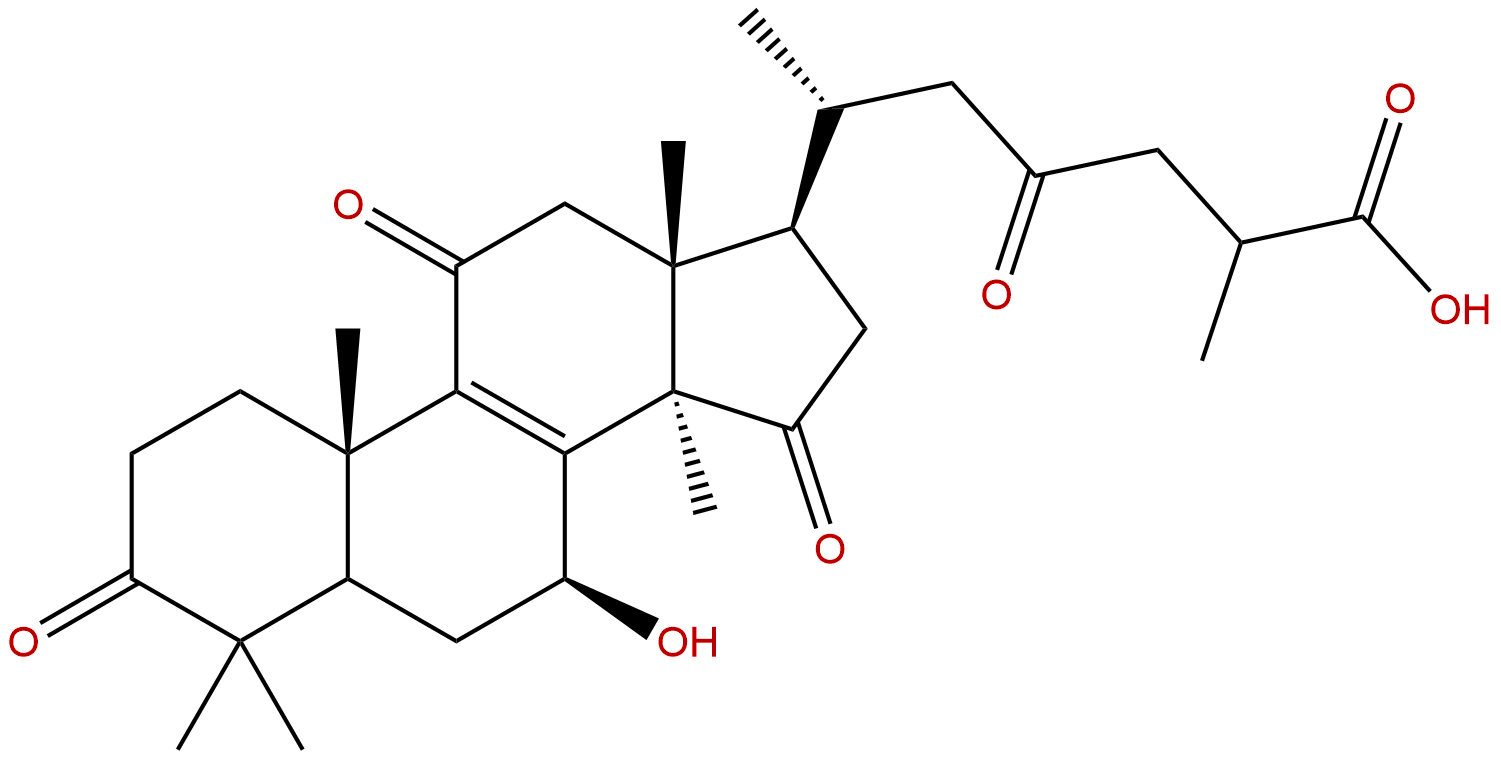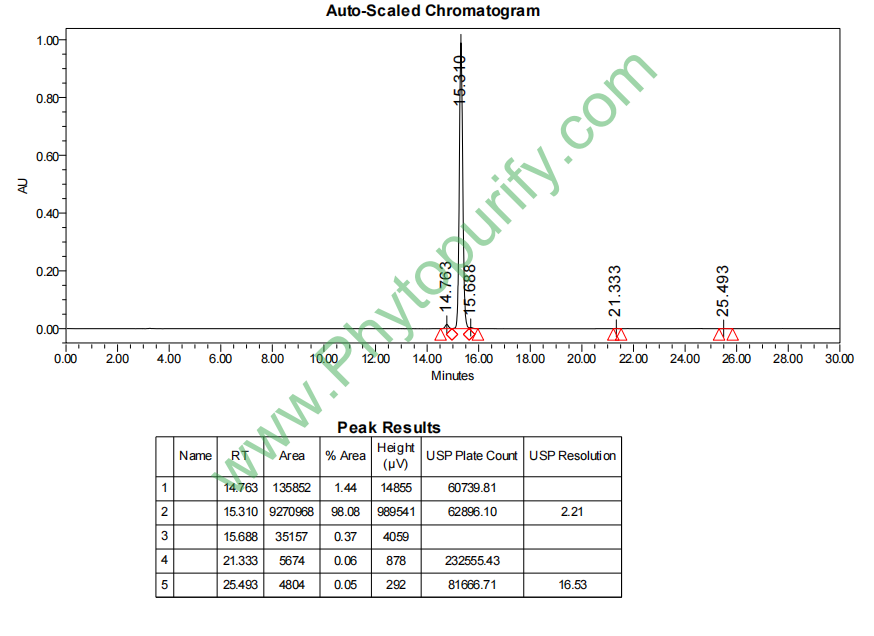
Ganoderic acid DCAS No.:108340-60-9
|
||||||||||
 |
|
|
||||||||

| Catalogue No.: | BP3156 |
| Formula: | C30H42O7 |
| Mol Weight: | 514.659 |
Product name: Ganoderic acid D
Synonym name:
Catalogue No.: BP3156
Cas No.: 108340-60-9
Formula: C30H42O7
Mol Weight: 514.659
Botanical Source:
Physical Description: Powder
Type of Compound: Triterpenoids
Purity: 95%~99%
Analysis Method: HPLC-DAD or/and HPLC-ELSD
Identification Method: Mass, NMR
Packing: Brown vial or HDPE plastic bottle
Storage: Store in a well closed container, protected from air and light. Put into refrigerate or freeze for long term storage.
Whenever possible, you should prepare and use solutions on the same day. However, if you need to make up stock solutions in advance, we recommend that you store the solution as aliquots in tightly sealed vials at -20℃. Generally, these will be useable for up to two weeks.
The product could be supplied from milligrams to grams, up to kilograms
Inquire for bulk scale.
Descriptions:
Ganoderic acid D (GD) is the major active triterpenoid in Ganoderma lucidum, a medicinal fungus used daily; biliary rather than renal clearance was the major route of excretion, the metabolic transformation included reduction, monohydroxylation, dihydroxylation, trihydroxylation, oxidation, desaturation, sulfation, and glucuronidation; the main metabolic soft spots in the chemical structure of GD were the 3-carbonyl group, angular methyl groups, the 7-hydroxy group, and the 26-carboxylic acid moiety.[1]
References:
[1] Cheng C, Yang M, Yu K, et al. Drug Metab Dispos , 2012, 40(12):2307-14.
[2] Zhao J, Chen X, Kaishun B I. China j Chinese Materia Med, 2009, 34(17):2220-2.
HPLC of Ganoderic acid D
